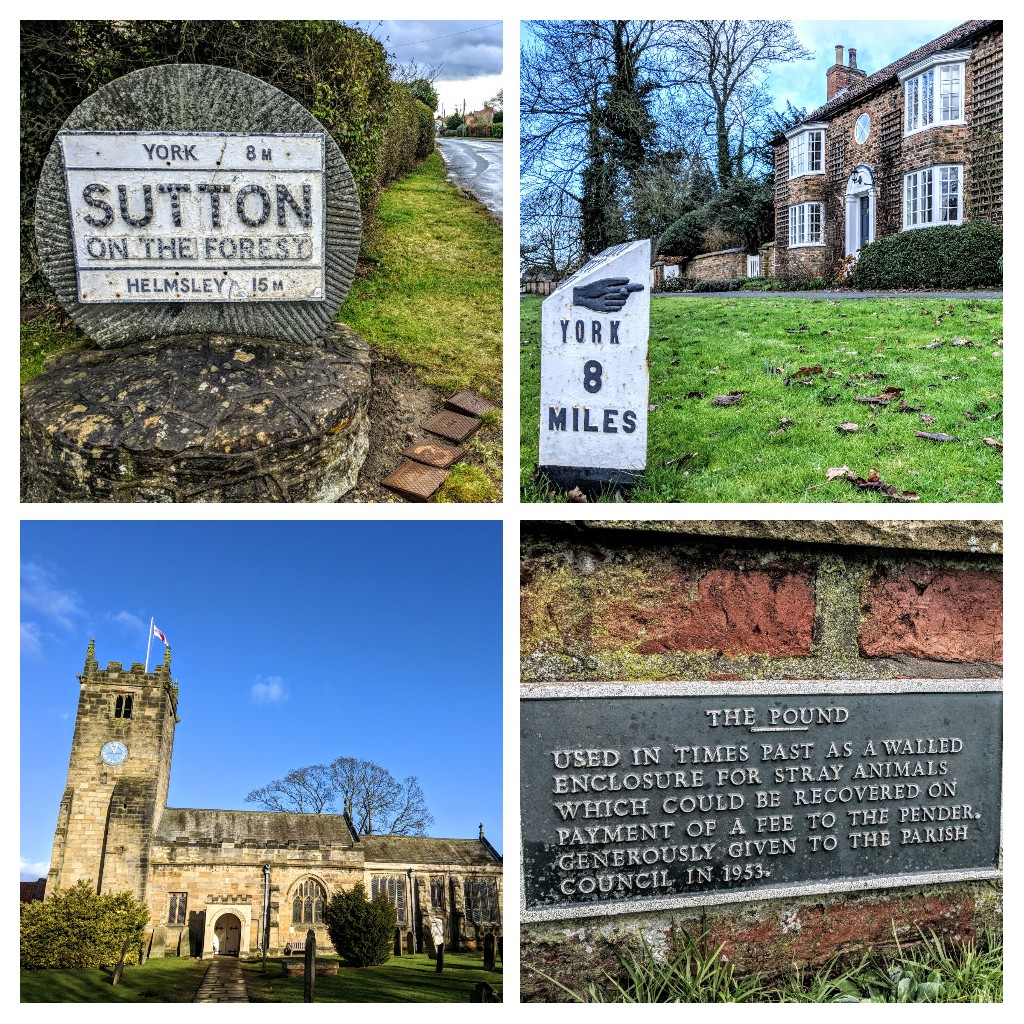Sutton on the Forest

Why we love SUTTON-ON-THE-FOREST
The wide, winding main street, the absence of street lights, the delightful houses and cottages…this is a small village with huge appeal.
Where:
Drive out of York, heading north on the Helmsley road, and you’ll soon come across the village of Sutton-on-the-Forest. There isn’t much forest anymore, although you’ll drive through a tunnel of trees on your way into the village. Wedged between Huby and Stillington, Sutton-on-the-Forest is actually part of the original ‘wapentake’ (a term for a subdivision of a county, used mainly in northern and midlands counties) of Bulmer.
History:
Sutton-on-the-Forest has a rich and varied history. Mentioned in the Domesday Book (William the Conqueror’s ‘Great Survey of Everything’ in 1086), the village has been in the possession of either the Crown or the nobility for most of the past 1,000 years.
The village became part of the vast estate of Bertram de Bulmer (nobleman, Norman descendant and Sheriff of York, responsible for building the original Sheriff Hutton Castle in the nearby village of Sheriff Hutton) and was later the possession of the Duke of Gloucester – better known as Richard III.
In 1738 Laurence Sterne became the Anglican Vicar of All Hallows Church in Sutton-on-the-Forest, retiring in 1759 to pursue the literary career for which is famous. He wrote the first two volumes of ‘Tristram Shandy’ while living in Sutton-on-the-Forest, before moving to the village of Coxwold in the North York Moors following his appointment as Curate of Coxwold.
Today:
The village of Sutton-on-the-Forest is one of the most desirable and sought-after locations in the commuting area around York. Big houses with even bigger gardens are typical of the village – house prices are therefore particularly high and residents tend to be more affluent than average.
Sutton-on-the-Forest is a real community village, with a well-respected primary school, a popular pub and a beautiful Anglican Church. The residents of Sutton-on-the-Forest have teamed up with their neighbours in Huby to run a village shop as a co-operative community benefit, with volunteers working and managing the store.
Street Lights
One feature of Sutton-on-the-Forest that most visitors fail to notice is the lack of street lighting on the main street. Instead of street lights, each house on Sutton-on-the-Forest Main Street are provided with a small payment every year – a subsidy towards their electricity bill to pay for a lamp outside the front door of each property. Pass through the village after dark and you’ll find there is just enough light to guide you from house to house, which gives Sutton-on-the-Forest a distinctly Victorian feel.
Sutton Park
Sutton-on-the-Forest contains a stately home and walled estate called Sutton Park. Built in 1730, the house was the centrepiece of an estate created by Philip Harland.
Sutton Park was purchased in 1963 by Sir Reginald and Lady Sheffield and has been Sir Reginald’s family home ever since. Sir Reginald Sheffield, 8th Baronet, is the father of Samantha Cameron (known in the press as ‘Sam Cam’) – wife of former British Prime Minister David Cameron. Sir Reginald is a direct descendant of John Sheffield, the 1st Duke of Buckingham and the man responsible for building Buckingham House, which today is known the world over as Buckingham Palace. Much of the furniture, porcelain and artwork in Sutton Park was commissioned for Buckingham House and has stayed in the Sheffield family since they sold the property to the Royal Family.
The Georgian house has impressive gardens including terraces flanked by lawns that were created in 1962 by Percy Cane. The gardens also boast a woodland walk to a temple, a lily-pond garden and a delightful Mediterranean atmosphere thanks to tall, columnar cypress trees.
The house is open for guided tours for just four weeks in June every year, while the gardens are open daily from 1st May – 31st August. Have a look at their website at www.statelyhome.co.uk for opening times, prices and further information about the estate and its history.
Origin of the name:
The original name for the village is just ‘Sutton’, which translates as simply “South Village”. It later became ‘Sutton sub Galtres’ and is now Sutton on the Forest. The forest reference is to the Royal Forest of Galtres, a medieval hunting forest.
Tours:
We visit or travel through Sutton-on-the-Forest on several of our day trips from York including:
Where to eat:
We’ll be updating this information soon – let us know if you have suggestions!
Where to go for a coffee:
We’ll be updating this information soon – let us know if you have suggestions!
Where to go for a drink:
We’ll be updating this information soon – let us know if you have suggestions!
Where to stay:
We’ll be updating this information soon – let us know if you have suggestions!
What to see:
We’ll be updating this information soon – let us know if you have suggestions!
